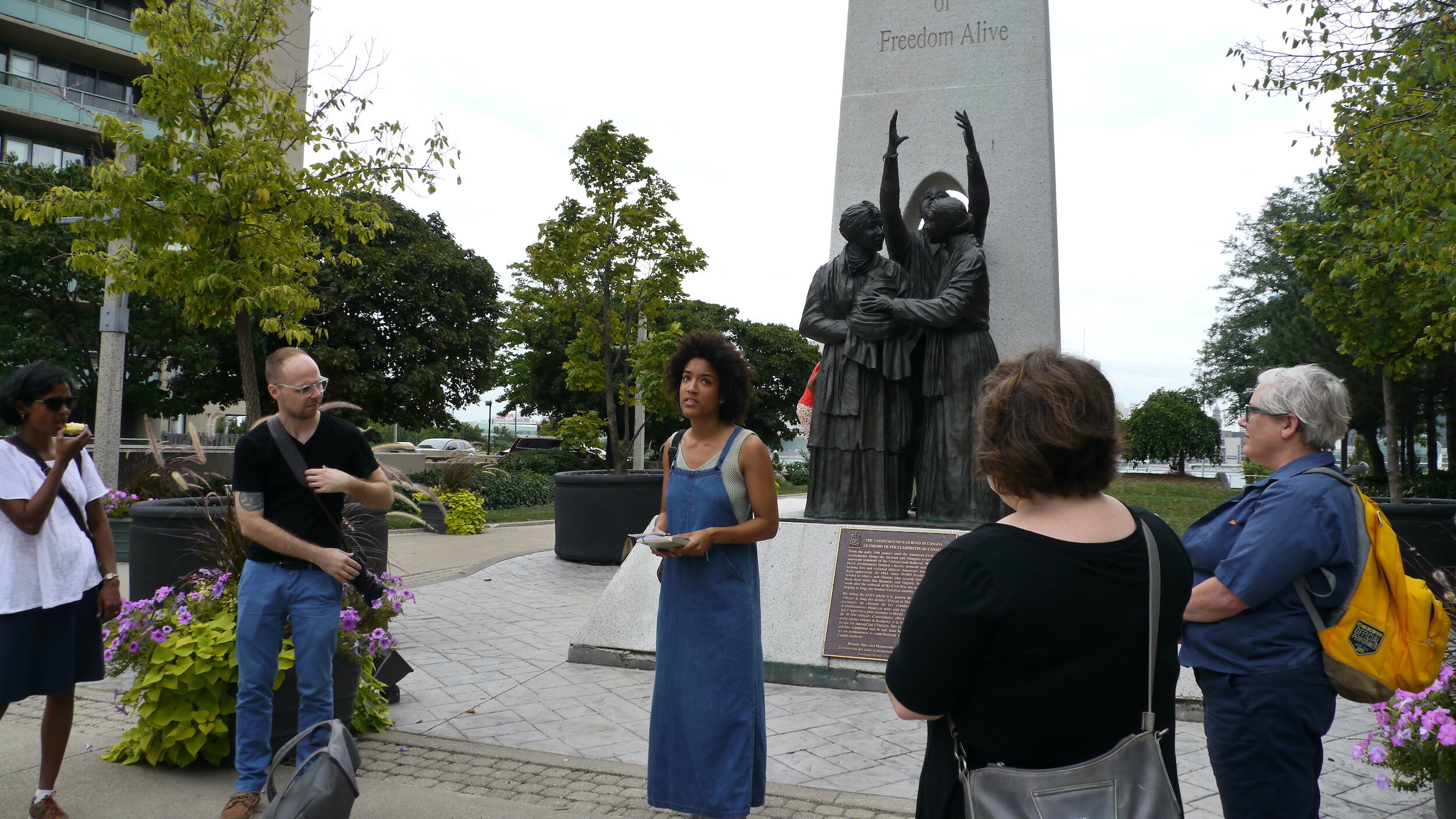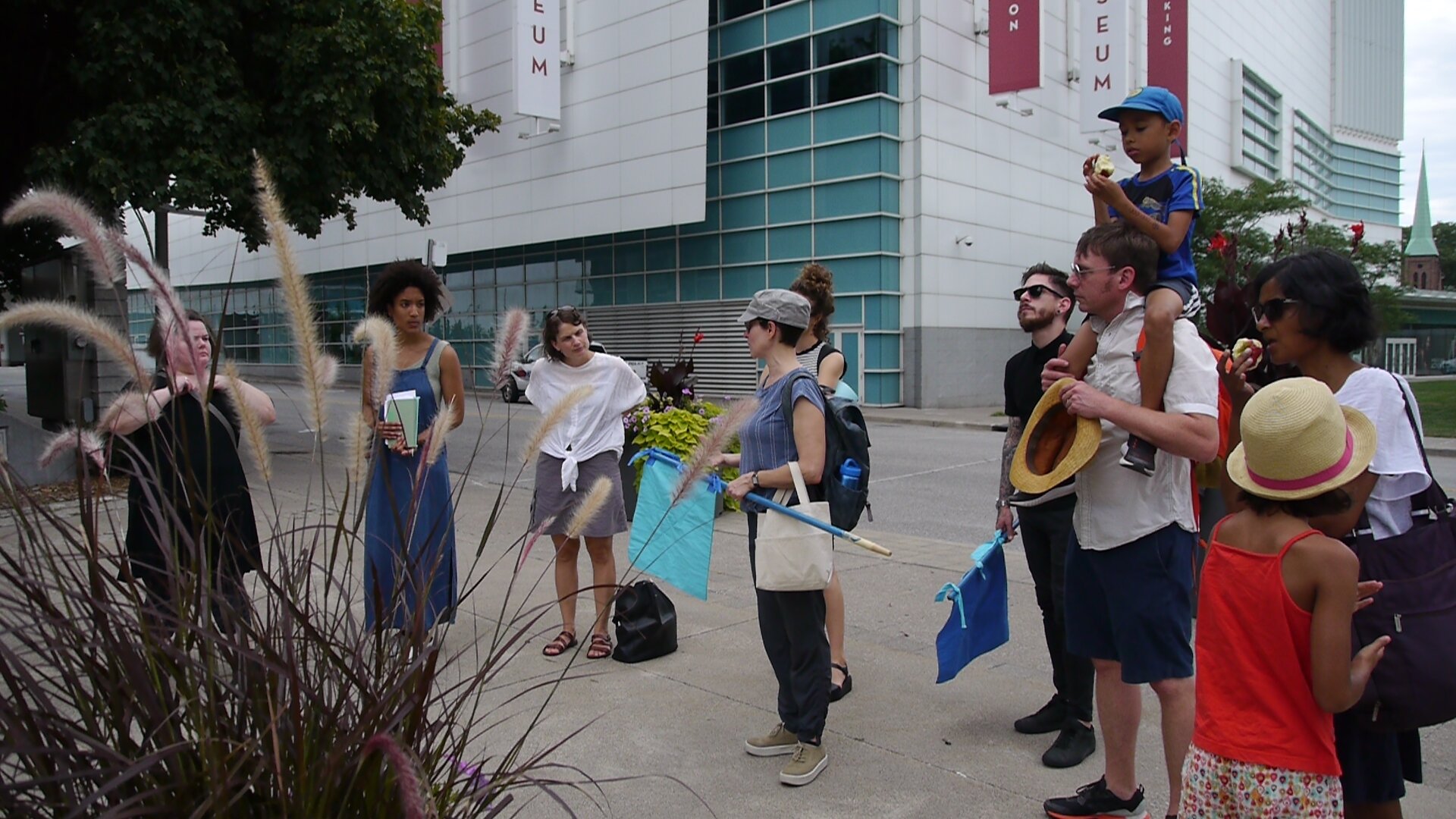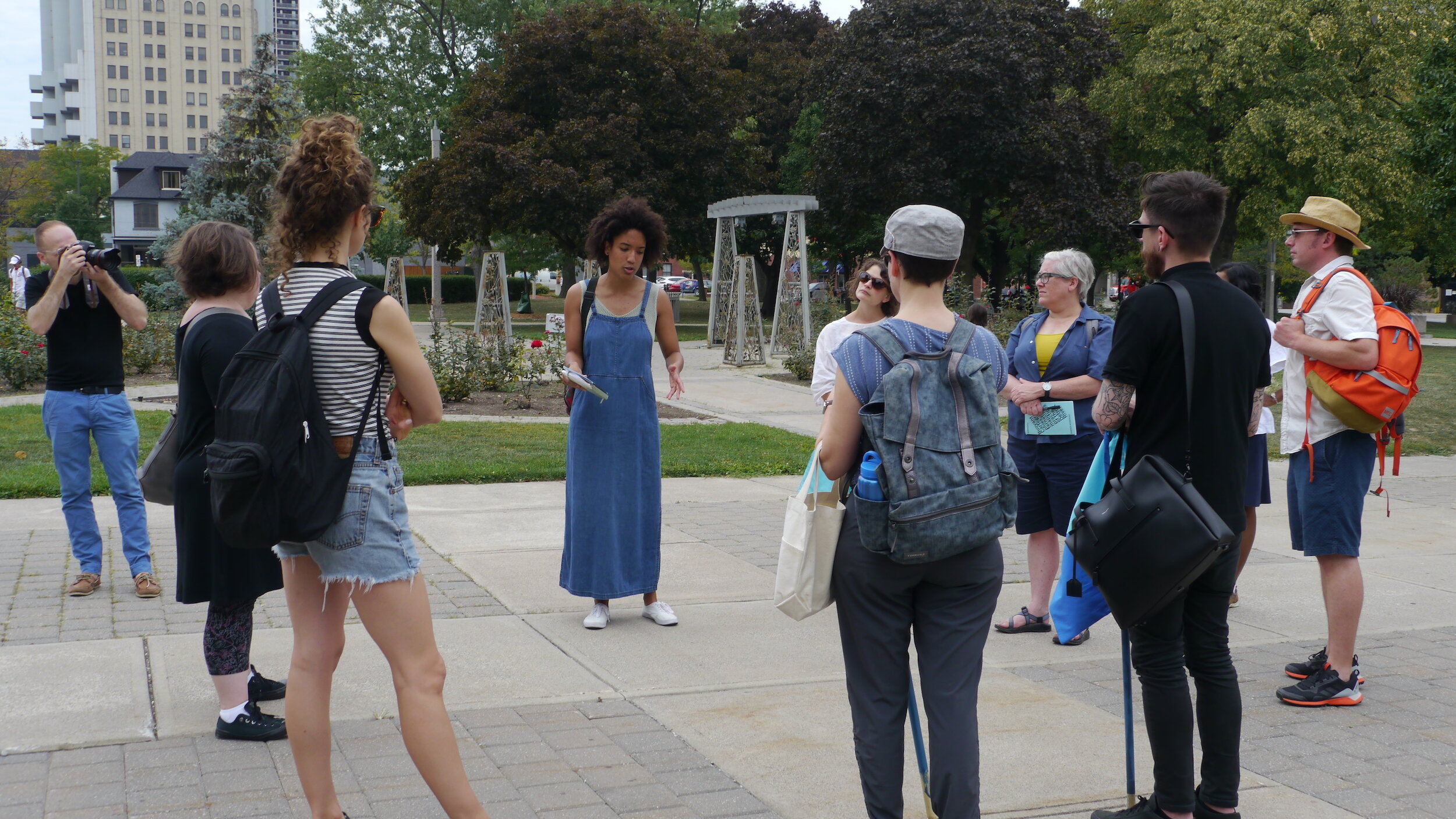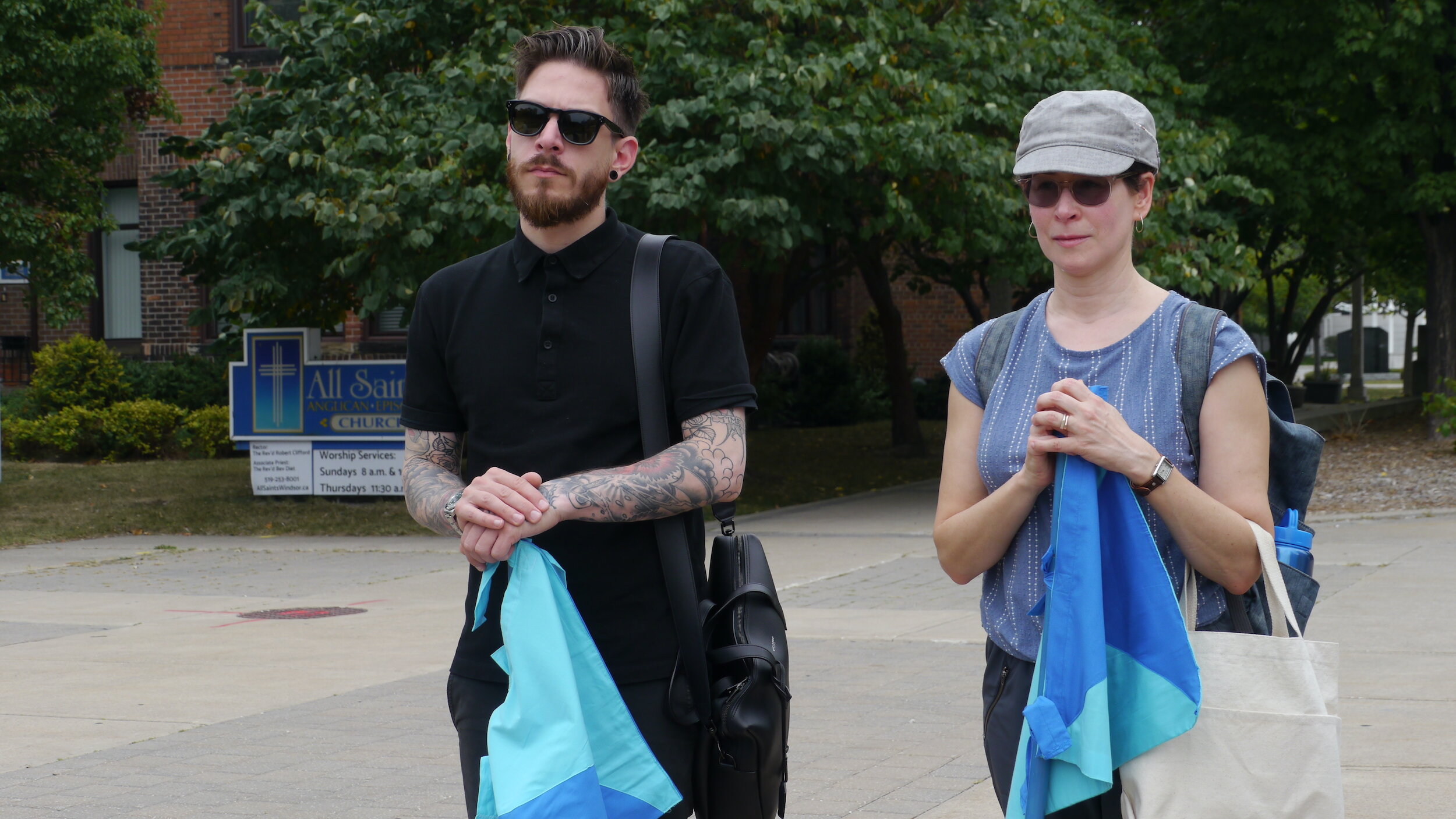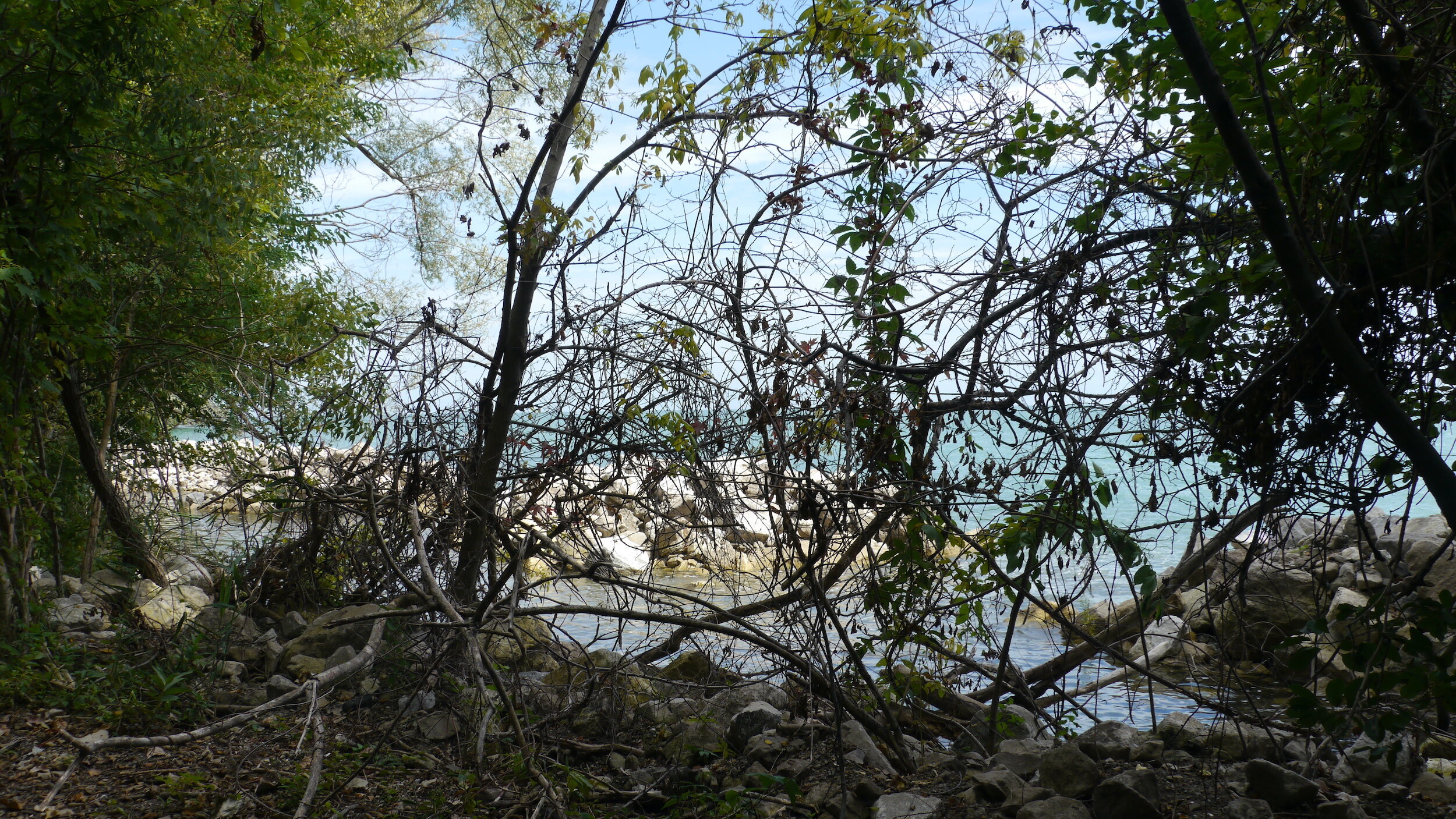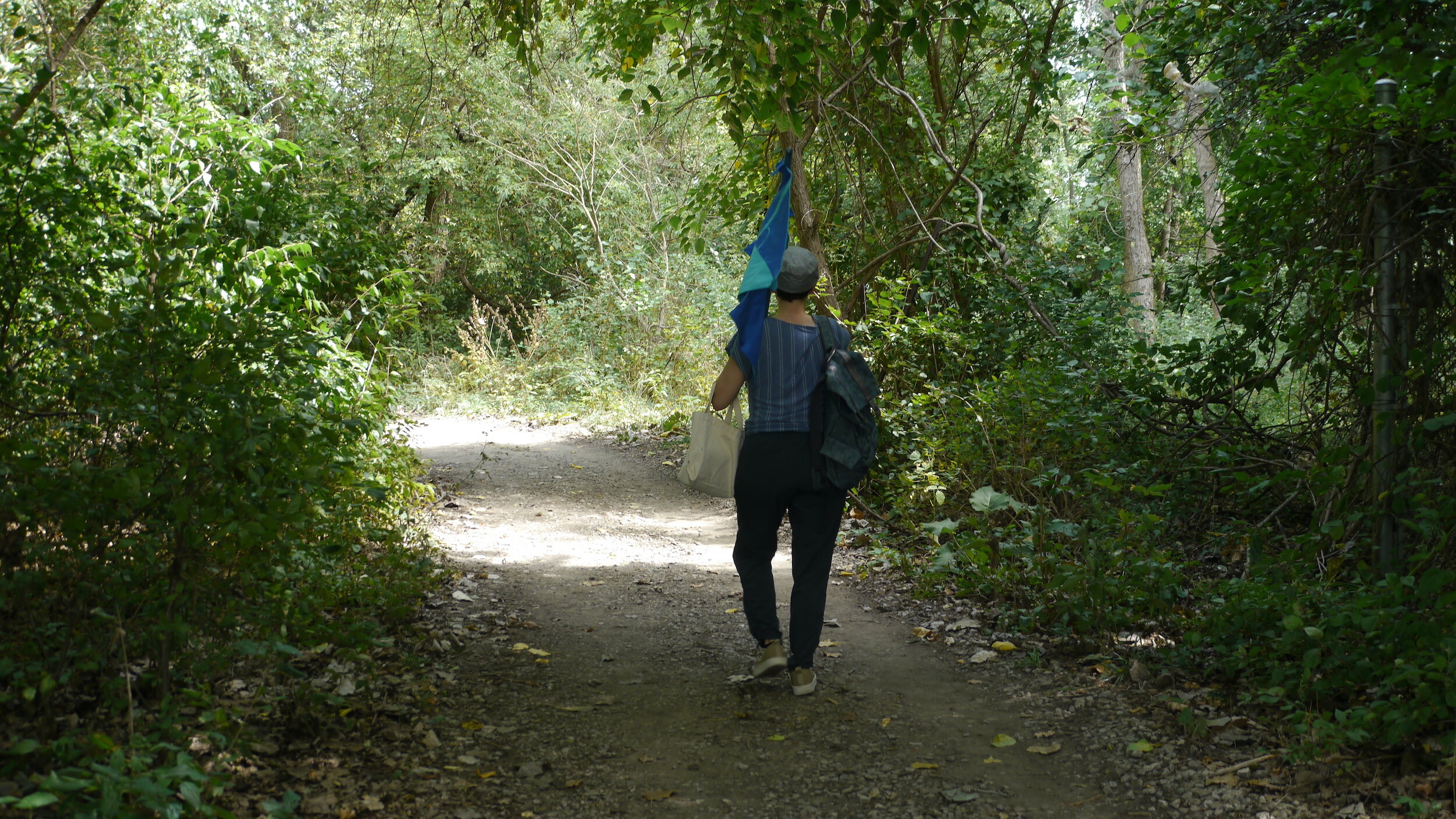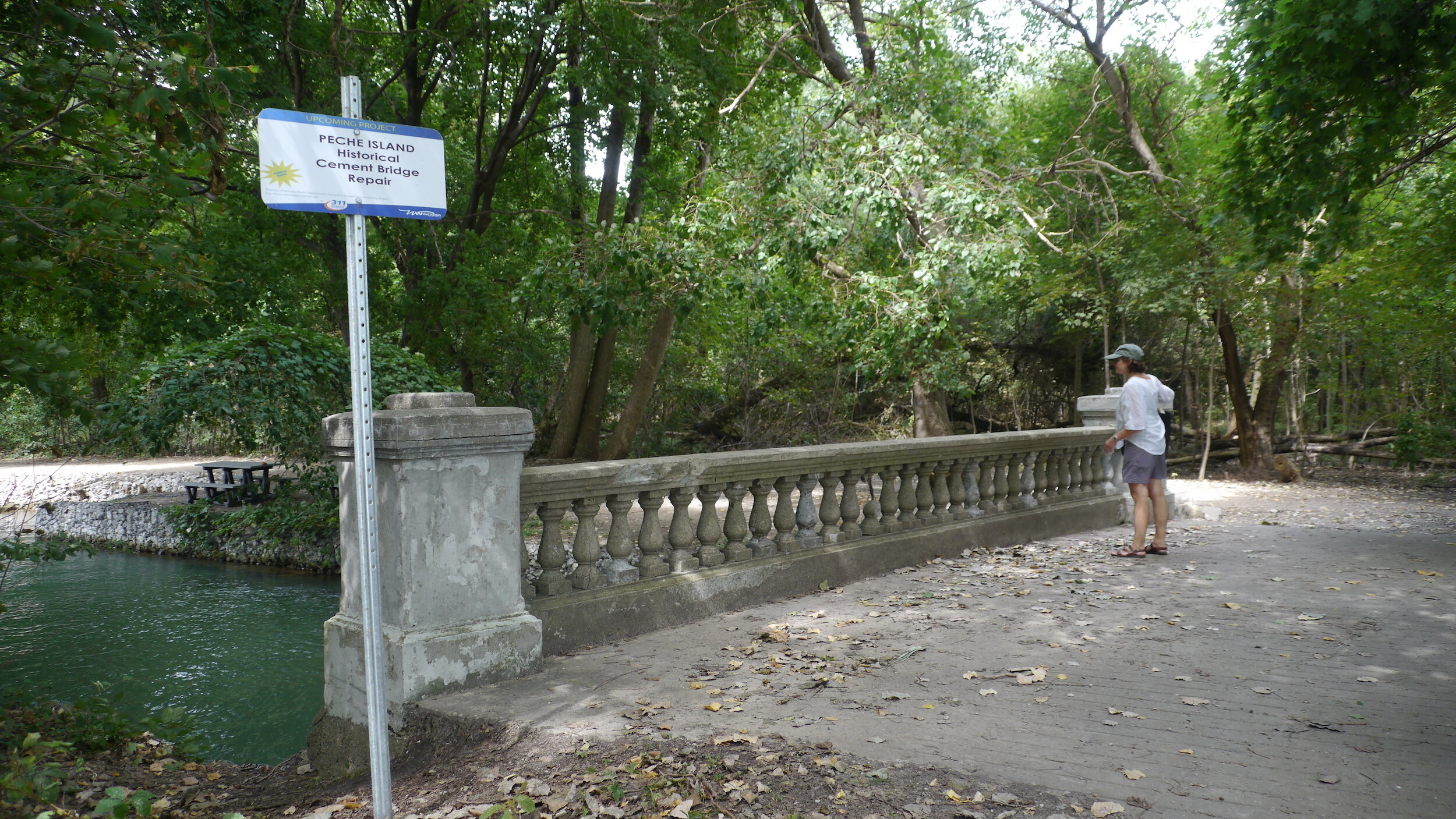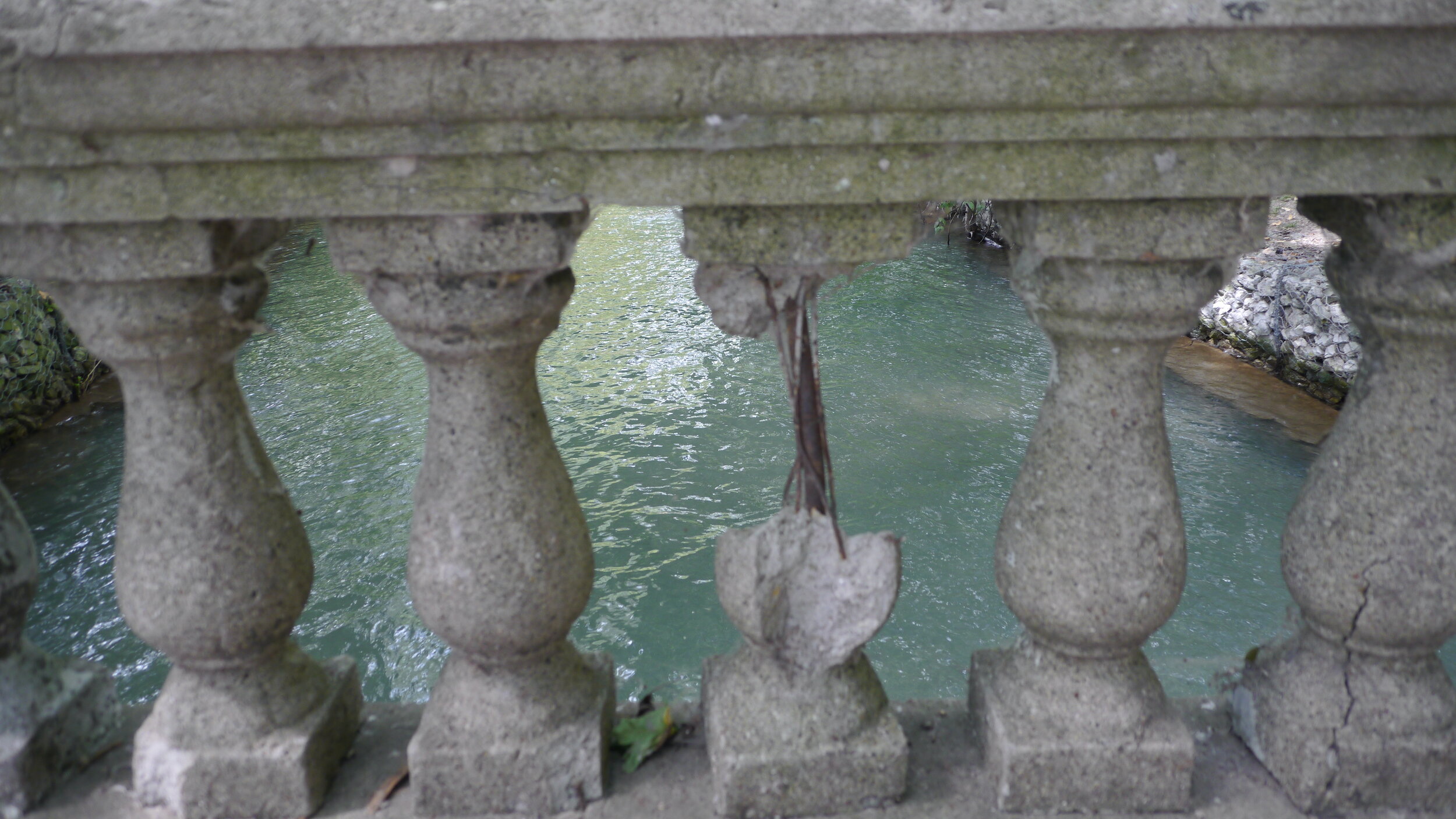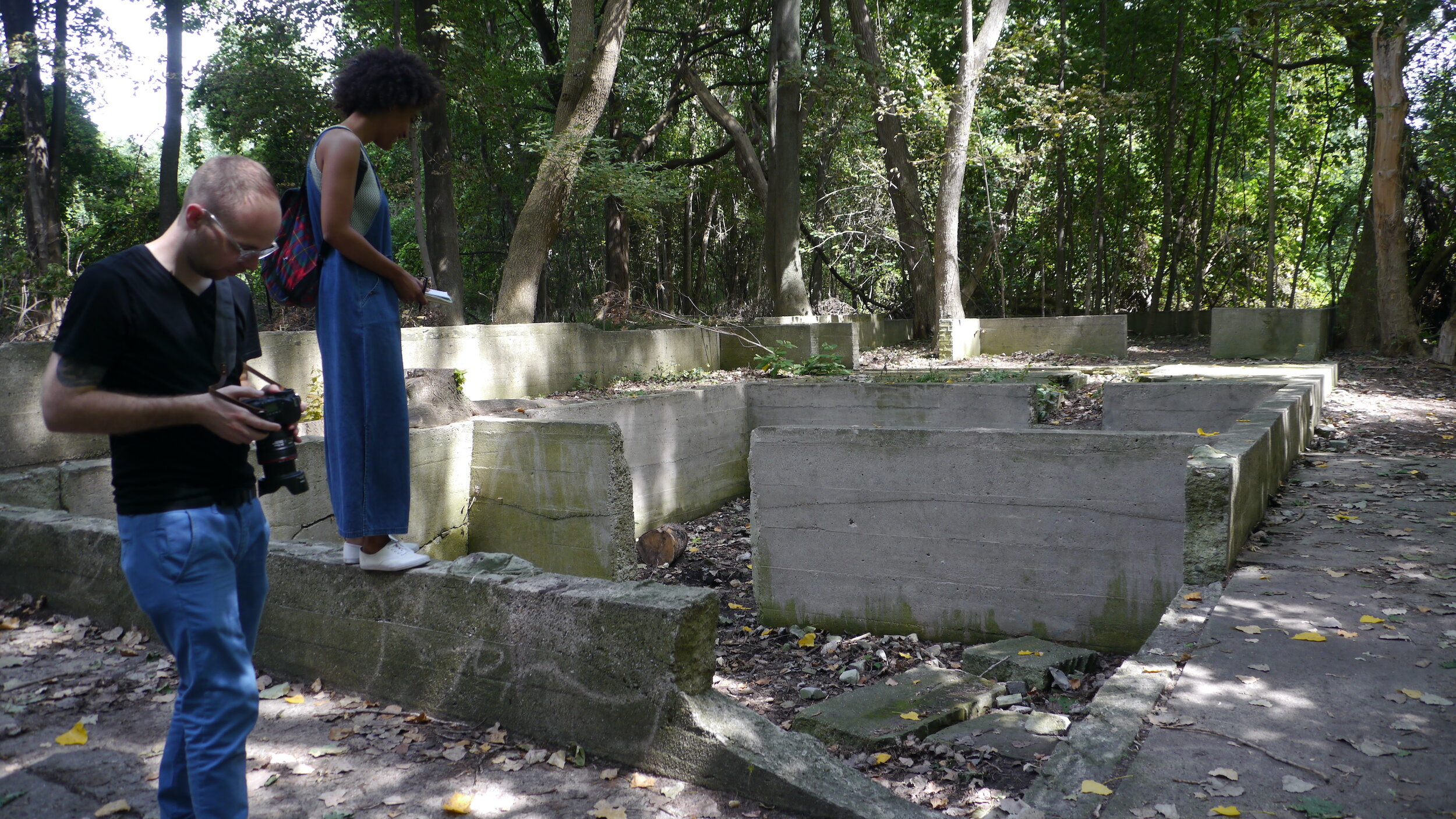Detroit Shoreline and U.S. boat tour
August 30, 2018
Justin Langlois and Holly Schmit (Float School)
Our first walk was led by Vancouver-based artists Justin Langlois and Holly Schmit who collaborate as Float School/Living Labs. Their walk set the stage for the weekend by encouraging us to interrogate the public narratives established in the Detroit RiverWalk and to suggest some of the ways in which tourist spaces might productively engage legacies of industrial pollution which are apparent on the River. This walk brought us to the Diamond River Queen, an aging tourist boat and river tour, which is the only legal way to get a large number of people to view the Detroit River from its center due to border security regulations. This excursion focused on the discrepancy between the tourist narrative of the Diamond River Queen which passed by the many allotments of back-yard mansions of the wealthy in Grosse Point, Michigan before turning downriver towards the Ambassador Bridge and the heavily industrial corridor of Zug Island on the US side and Windsor Salt on the Canadian side. The industrial end was of interest to our group as this is where there is a trans-border geological axis that connects the salt mines (that run beneath the River), as well as the freshwater springs that were 19th-century sites of leisure around Brighton Beach (on the Canadian side) and Springwells (on the U.S. side).
Photos: Josh Babcock and Taien Ng-Chan











